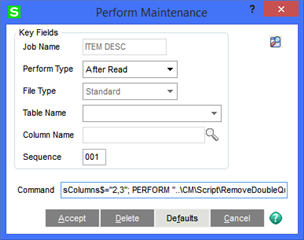Can i import a Sales Order through Visual Integrator by description rather than alias or item number? How would this be done?
Sage 100
Welcome to the Sage 100 Support Group on Community Hub! Available 24/7, the Forums are a great place to ask and answer product questions, as well as share tips and tricks with Sage peers, partners, and pros.
Technical and Installation
Can i import a Sales Order through Visual Integrator by description rather than alias or item number?


